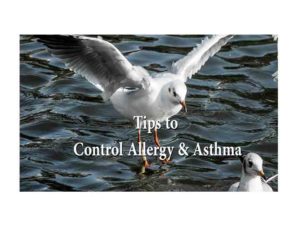Allergy symptoms due to mold can be seasonal and perennial
Mold Allergy
Mold allergy can cause troublesome symptoms. This is one of the common triggering factor for seasonal allergies or hay fever.
Molds and mildew are fungi. They are very different from plants or animals. They have different way of reproduce and grow. It can be air borne. The “seeds,” called spores, can travel through the air. When someone inhale the spores of the mold then they have allergic symptoms.
Few spores spread in dry, windy weather. Others are spread with the fog or dew when humidity is high. Fungi can grow both indoors and outside. Fungus can acts as perennial allergen.
Most of the outdoor molds become inactive during the winter season. But they grow in the spring. Indoors fungi grow in damp areas. They can often be found in the bathroom, kitchen or basement. So cleaning of these areas are necessary.
Food fungi usually do not cause allergic symptoms. Food fungus include:
Mushrooms,
Dried fruit, or
Foods containing yeast, vinegar or soy sauce
However few food contain histamines which can trigger allergic symptoms when they consume like wine.
Mold Allergy symptoms include:
Sneezing
Runny nose
Stuffy nose
Itchy, watery and red eyes
Itchy nose and itchy throat
Postnasal drip
Skin itching
Coughing
In addition to this Mold allergy can trigger asthma symptoms and can lead to:
Breathing difficulty
Tightness in the chest or chest pain
Wheezing sound
Trouble sleeping
Mold can cause allergic bronchopulmonary aspergillosis
Outdoor molds mainly cause allergy symptoms in summer and fall seasons. Whereas indoor molds may cause perennial allergy symptoms.
Diagnosis of Mold Allergy?
Symptoms:
Tell your physician /allergist, the symptoms you are experiencing. Tell him when this symptoms start occurring, how much time the symptoms last and how you get relief. Ask for perennial allergic symptoms.
Physical examination: To find out any urticarial lesion in the body and to exclude other cause of similar symptoms.
Investigation-
Skin prick testing (SPT) or Prick skin testing (PST), is a widely used, high quality, low risk allergy test to demonstrate immediate IgE-mediated allergy. The test is cost effective. The test should be performed by a trained person.
Allergen specific IgE testing- Blood testing for allergen-specific IgE is usually performed when the skin prick test is contraindicated. They can also be done in extreme of age i.e., an infant and elderly patients where skin prick test is not appropriate.
Treatment for Mold Allergy
The most important step is to avoid mold
Certain over-the-counter and prescription antihistamines.
Nasal corticosteroids spray.
Leukotriene receptor antagonists
Decongestants
Immunotherapy (allergy shots).
Pollen avoidance measures
Reduce Your Exposure to Mold Spores Outside
- Avoid outdoor activities when mold counts are high. This will reduce mold exposure.
- Wear a face mask when cutting grass, digging around plants, picking up leaves etc.
Reduce Your Exposure to Mold Spores Inside
- Use air conditioning or air purifier.
- Lower your indoor humidity. Mold loves humidity. The goal is to keep humidity below 45%, but below 35% is better.
- Clean bathrooms, basements and laundry areas.
- Be aggressive about reducing dampness.




